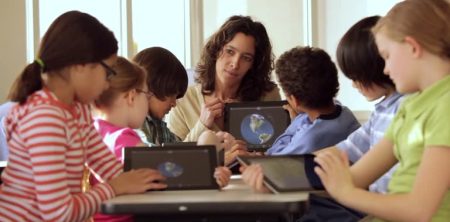The ESL teacher faces unique pedagogical challenges when supporting English language learners in diverse classroom settings. Interestingly, thoughtfully selected kids animated shows have emerged as remarkably effective instructional tools for language acquisition, offering linguistic, visual, and contextual supports that enhance comprehension and vocabulary development. These multimodal presentations of language provide English learners with accessible entry points to new vocabulary, grammatical structures, and cultural contexts through engaging narratives that maintain student interest and reduce language anxiety. The strategic implementation of animated content within ESL instruction represents an evidence-based approach to meeting the diverse linguistic needs present in today’s classrooms.
Research in second language acquisition consistently demonstrates the effectiveness of comprehensible input—language that stretches beyond learners’ current proficiency while remaining accessible through contextual supports. Quality animated programming excels at providing this optimal input through its combination of clear speech, expressive visuals, and narrative contexts that make meaning accessible even when vocabulary isn’t fully understood. The visual component proves particularly valuable for beginning English learners, allowing them to connect new vocabulary with concrete visual referents rather than relying on translation. This multimodal presentation accelerates vocabulary acquisition while building confidence in comprehension abilities.
The repetitive language patterns common in many children’s animated programs provide another significant benefit for language learners. Predictable phrases, character catchphrases, and recurring narrative structures create multiple exposures to key vocabulary and grammatical constructions—a condition essential for language acquisition. Unlike static textbook repetition, animated repetition occurs within varying contexts that demonstrate how language functions in different situations. This contextualized repetition helps learners recognize patterns in English grammar naturally, without explicit grammatical instruction that might overwhelm beginning language learners.
Cultural literacy represents another crucial dimension of language learning where animated content offers substantial benefits. Language acquisition involves more than vocabulary and grammar—it requires understanding cultural references, nonverbal communication patterns, and social norms embedded within the target language. Animated programming produced in English-speaking countries naturally incorporates these cultural elements, providing ESL students with windows into cultural practices, holidays, traditions, and social expectations. These cultural insights facilitate deeper integration into English-speaking communities beyond classroom walls.
The emotional engagement generated by animated narratives creates ideal psychological conditions for language acquisition. When students become invested in animated stories and characters, their affective filters lower—reducing anxiety about language learning and increasing receptivity to linguistic input. This emotional engagement motivates continued attention to English content even when comprehension remains challenging. Teachers report that students who resist traditional language instruction often demonstrate surprising persistence when working with animated content that captures their interest through compelling characters and narratives.
Differentiation for diverse proficiency levels represents a persistent challenge in ESL instruction that animated content helps address through multiple entry points to the same material. Beginning English learners might focus primarily on concrete vocabulary and basic narrative comprehension, intermediate learners might attend to grammatical structures and idiomatic expressions, while advanced learners might analyze character development and thematic elements. This layered linguistic complexity allows teachers to use the same animated content across proficiency levels with differentiated learning objectives and assessment expectations.
Strategic implementation of animated content for language acquisition involves more than passive viewing. Expert ESL teachers prepare students for viewing with pre-teaching of key vocabulary, prediction activities, and purpose-setting questions that direct attention to specific linguistic features. During viewing, techniques like strategic pausing, guided note-taking, or dialogue repetition maximize language learning opportunities. Post-viewing activities such as retelling, role-playing scenarios from the animation, or creating alternative endings solidify new language through production practice. This structured pedagogical framework transforms entertainment into effective language instruction.
The multimodal nature of animated content supports another crucial aspect of language acquisition: pronunciation and prosody development. The clear articulation, varied intonation patterns, and natural speech rhythms in quality animated programming provide excellent models of English pronunciation for language learners. Many ESL teachers incorporate dialogue repetition activities where students mimic the pronunciation, stress patterns, and emotional expressiveness of animated characters. These speaking activities develop not just pronunciation accuracy but also the natural rhythm and expressiveness that characterize fluent English speech.
Parent partnerships prove particularly important when using animated content for language instruction in diverse communities. Some ESL teachers create family viewing guides that suggest specific animated programs appropriate for home language practice, provide key vocabulary to listen for, and offer simple discussion prompts in both English and home languages. These resources empower families to support English development regardless of parents’ own English proficiency levels. Additionally, encouraging dual-language viewing (with English audio and home language subtitles or vice versa) creates valuable language bridges that support both English acquisition and home language maintenance.
Looking toward future developments, emerging technologies promise to further enhance animation’s effectiveness for language instruction through interactive features that allow personalization based on individual learning needs. Adaptive animated content that adjusts linguistic complexity based on learner responses, provides vocabulary scaffolding on demand, or allows manipulation of speech rate offers exciting possibilities for differentiated language instruction. These technological innovations represent the next evolution in animation’s contribution to effective, engaging English language acquisition in increasingly diverse educational environments.

